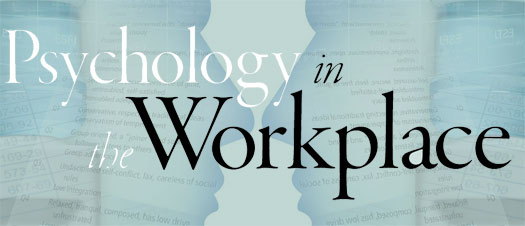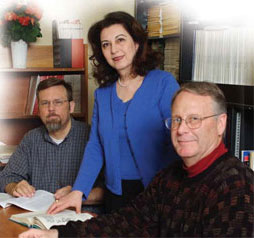The quest to understand and measure the complexities of human personality has long fascinated both scientists and philosophers alike. By the late eighteenth century these efforts had coalesced into a branch of medicine called phrenology, in which practitioners sought to quantify personality traits and mental acuity by measuring bumps on the human skull. The futility of this practice, also called “bumpology” was summed up perfectly by a famous Mark Twain anecdote in which he submitted himself, anonymously, to an examination by famous phrenologist Lorenzo Fowler. As the story goes, Fowler found a cavity where a bump ‘should’ have been and declared that this “represented the total absence of the sense of humor” in Twain.
Oops.

In the decades since, the study of personality has evolved into an empirical science, one that’s at the heart of the discipline of industrial and organizational (I/O) psychology. I/O psychology is a booming industry; the United States Department of Labor projects a 21 percent increase in the number of I/O jobs available over the next decade, the majority of those positions likely filled by candidates with graduate degrees.
Although I/O psychology is a broad field that deals with a wide array of workplace- and human resources related subjects, pre-employment screening, “selection” is one of the most common that modern I/O psychologists tackle. Personality testing is a widely used measure of workplace compatibility.
Joseph Wilkinson says that his own experience being tested for a job more than two decades ago—a process he describes as “time consuming, but interesting”—inspired him to seek out I/O psychology specialists when he and his partner opened their consulting business, Skalinder-Wilkinson and Associates, Inc. “We decided to use the process to screen all 13 or 14 of the prospective employees for the firm,” Wilkinson says, “because we wanted to make sure our future employees were compatible with our company’s culture.” The results were nothing short of spectacular.
“In the 12 years we were in business, we only lost one employee,” he says, adding that this lone defection was the result of a marriage, and not any sort of conflict. He says that the experience taught him a valuable lesson about testing and the selection process: “Yes, occasionally the process will make mistakes, as these tests aren’t infallible; but in cases where the tests indicate that a candidate is deficient for whatever reason, that’s something I wouldn’t recommend ignoring.”

Photo: Bonnie Robinson
“I think more companies are testing today,” says Bruce Fisher (Ph.D. ’84), director of the IIT Institute of Psychology’s Center for Research and Service. The numbers bear this out: the testing industry has ballooned into a $400+ million industry with an estimated 8-10 percent rate of annual growth, and an array of (unsupervised) off-the-shelf tests are readily available to consumers. Of course, these off-the-shelf instruments have opened the door to inappropriately conducted testing, which in part is why testing has gotten somewhat of a bad reputation, at least in the press.
“There are a lot of tests out there that are not well developed, but have a tremendous amount of great marketing glitz to them,” Fisher says. “But they are not good tools, and they are neither valid nor legally defensible. Companies can get into trouble [using them].”
“Personality tests, like any test—indeed, any measurement—yield scores that have errors, but you have to consider the alternative,” explains Alan Mead, assistant professor at the institute and an expert in psychometrics, the science of psychological measurement. “The idea that tests are worthless because they are not perfectly reliable and valid is exactly analogous to arguing that we should scrap the judicial system in this country because sometimes a guilty person is found innocent, or vice-versa.”
In fact, he adds, “We have good reason and empirical support to assume that run-of-the-mill interviews have substantially lower validity and reliability than personality testing.”
Personality testing is but one tool that I/O psychologists have at their disposal when seeking to improve a company’s selection methods. Fisher points out that companies with strong selection processes, are going to have other methods to get at the same type of data in a different way,” what he calls a ‘multi-method approach.’ One example he offers is combining a personality test with a background check or an interview. “You’re looking, of course, for confirmatory data from the different methods,” he says.
As for interviewing, Fisher recommends a different methodology to help weed out potentially bad hires, a system called SAR, or “Situation, Action, Result.” He summarizes SAR with the hypothetical interview of a customer service agent: “The question might be something like this: ‘describe a time when you dealt with an exceptionally difficult, or unruly, customer.’” Fisher explains that established guidelines help interpret a candidate’s response; for example, a behavior profile is crafted by comparing how a candidate responds to an identical situation faced in the past by top-performing employees. This is called the “critical incident method.”
Intelligence testing is another common tool of the selection process, but it’s one that has been fraught with controversy—namely allegations of bias against minority candidates. However, as a pure predictor of job performance, it’s regarded as a very effective tool, particularly for executive positions. “All other things being equal, there isn’t a job in the world where it pays to be dumber,” Mead notes dryly.

“Research shows that mental ability is the most critical and broadly generalizable facet in predicting executive success,” says Fisher. He cites a recent statistic that roughly 25 percent of executive-level success can be accounted for solely by intellectual horsepower. Of the other 75 percent, Fisher says that there are many personality factors that are important, primarily traits like conscientiousness, integrity, persuasiveness, social confidence, and flexibility.
Predicting executive success is a timely topic at IIT, who as of press date had three executive-level job openings: two deanships and a provostship. The university has hired recruitment firms to handle these nationwide candidate searches.
The first step in executing such a search would be to pare down the pool of candidates, Fisher says hypothetically—likely through a multiple interview process—until only a group of finalists remain. From there, he says, “We would typically recommend an assessment that is comprised of a battery of validated tests, both personality and cognitive ability, and then complement that with an in-depth interview”—all supervised by a qualified psychologist.
Although Fisher isn’t involved in IIT’s current executive searches, he deals with these issues on a daily basis in his work directing the Center for Research and Service. “If there’s one thing that we feature as a core competency, it’s that we’re really good at helping companies measure human resources-related strategies,” he says, “in terms of how well they’re working and where they can be investing.” This includes measuring occupations through a psychometric (statistical) method known as “job analysis,” validating pre-employment testing, structuring employment interviews, designing performance appraisal methods, and evaluating the effectiveness of job training programs.
Operated as a nonprofit entity, the center serves as a consulting firm for the institute, providing a revenue stream for research initiatives while allowing students to translate their classroom study into applied consulting experience. “In fact,” notes Fisher, “I’ve come to see this as the most important aspect of the center.” For example, the center’s staff is currently engaged in research designed to enhance the utility of the 16PF, a common personality test. One such project uses item response theory to help ensure even better psychometric characteristics in future versions of the 16PF.
While this real-world experience is crucial in preparing students for careers in I/O psychology, it also helps reinforce what students learn in the department’s academic program. The curriculum is “based on the scientist-practitioner model, with a mission to train students with broad knowledge of processes of human relationships in the workplace (organizational psychology) and policies and practices (personnel),” explains Roya Ayman, director of the institute’s I/O Psychology Training Program. “It has a strong emphasis on methodology and quantitative aspects.” The program is the oldest of its kind in Chicago, and was ranked sixth best in North America by TIP, a publication of the Society of Industrial/Organizational Psychology, in 2004.
The institute offers students two tracks: the Personnel Human Resources Development track, in which students earn a non-thesis master’s degree; and an I/O doctoral track, in which students compose a master’s thesis and a dissertation, and receive a Ph.D. with a specialization in psychology. It’s a highly selective program; Ayman estimates that only five to 10 students are admitted to the Ph.D. track annually. The program boasts a 100 percent placement rate for graduates—exactly what you’d expect for such a select group of students who specialize in the science of occupational psychology.
humansciences.iit.edu/psychology
Common I/O Psychology Tests
“One of the more widely accepted theories—although by no means universally accepted or a perfect theory—is the idea that you can break down what we call personality into five different bins, sort of the global characteristics,” says I/O Assistant Professor Alan Mead. “The ‘Big Five’ is a common way of putting it.”
Although no two personality tests are created equal, Mead says that most use slightly different variations on the widely accepted Big Five model.
Some common tests:
- 16PF (16 Personality Factor Questionnaire) The 16PF is so widely used that it has been adapted into 35 different languages. It is a normal-range personality test designed to give an in-depth assessment of the subject via its own Big Five (extraversion, anxiety, tough-mindedness, independence, self-control), as well as the 16 normal-range traits indicated by the test’s name. Mead is currently seeking to launch a research initiative to make it easier for practitioners to analyze a job to determine which 16PF factors are job-related.
- MBTI (Myers-Briggs Type Indicators) The MBTI is a well-established tool in occupational psychology that seeks to classify how we view, react to, and structure the world around us. Subjects are broken down into one of 16 types, as determined by these factors: extraversion/ introversion, sensing/intuition, thinking/feeling, judging/perceiving. MBTI is used by an estimated 89 of Fortune 100 companies.
- Wonderlic Personnel Test The Wonderlic is a 12-minute, 50-question exam used primarily to assess adaptive problem-solving skills and aptitude for on-the-job learning; the test’s results can then be extrapolated to plot a candidate’s intelligence quotient. This test has been made famous in recent years by teams in the National Football League, which routinely administer it to prospective rookie players during the league’s annual draft combine.
- MMPI (Minnesota Multiphasic Personality Inventory) A commonly used test in the mental health fields, the MMPI is administered to roughly 15 million people annually. It was developed at the University of Minnesota in 1942 to identify psychopathology in patients. Mead notes that although the MMPI is sometimes erroneously referred to as a personality test, its development and intended uses are clearly very different from instruments like the MBTI or the 16PF. Because of its medical nature, he says that its use as a screening tool in selection likely violates the Americans with Disabilities Act.